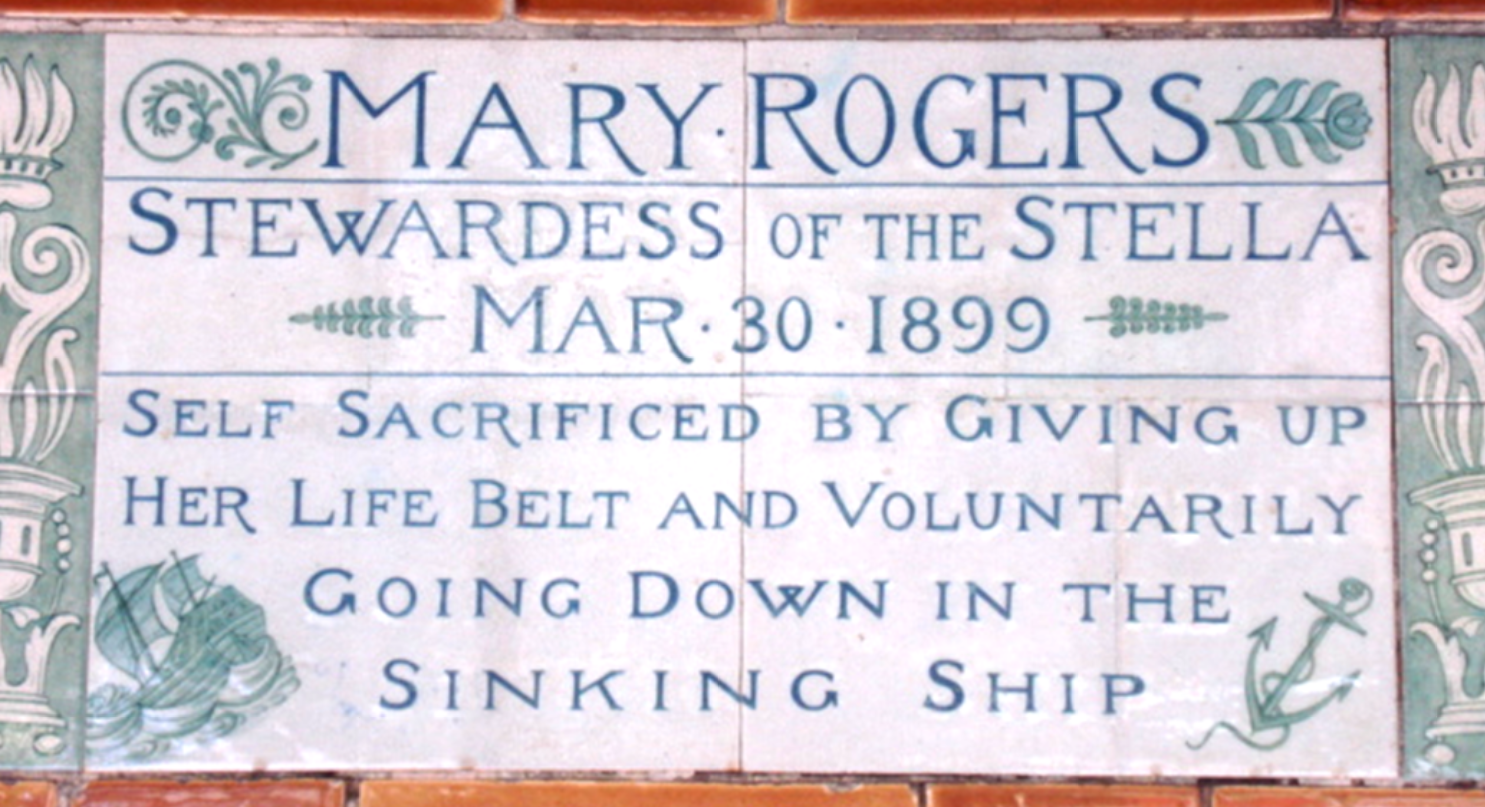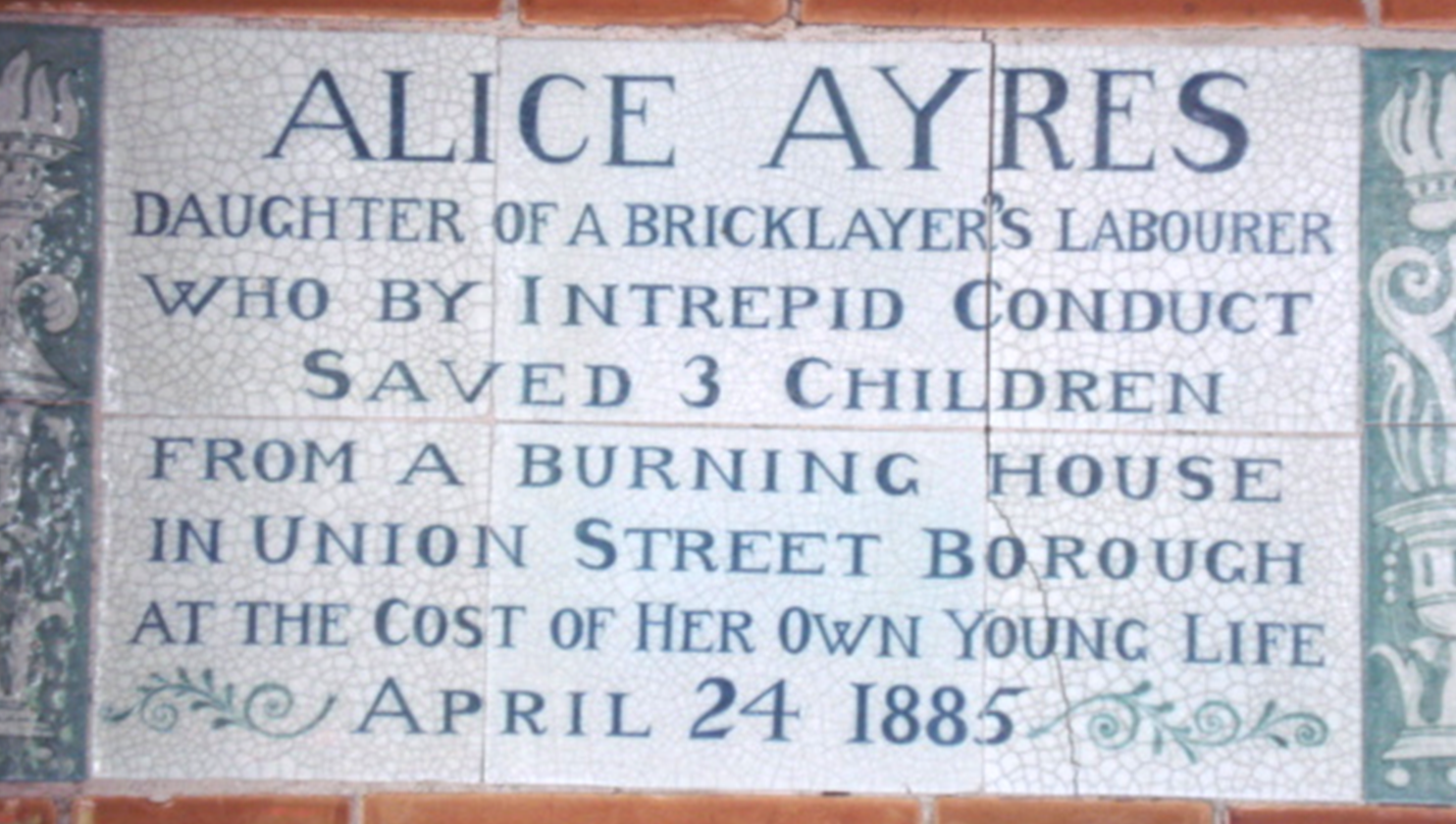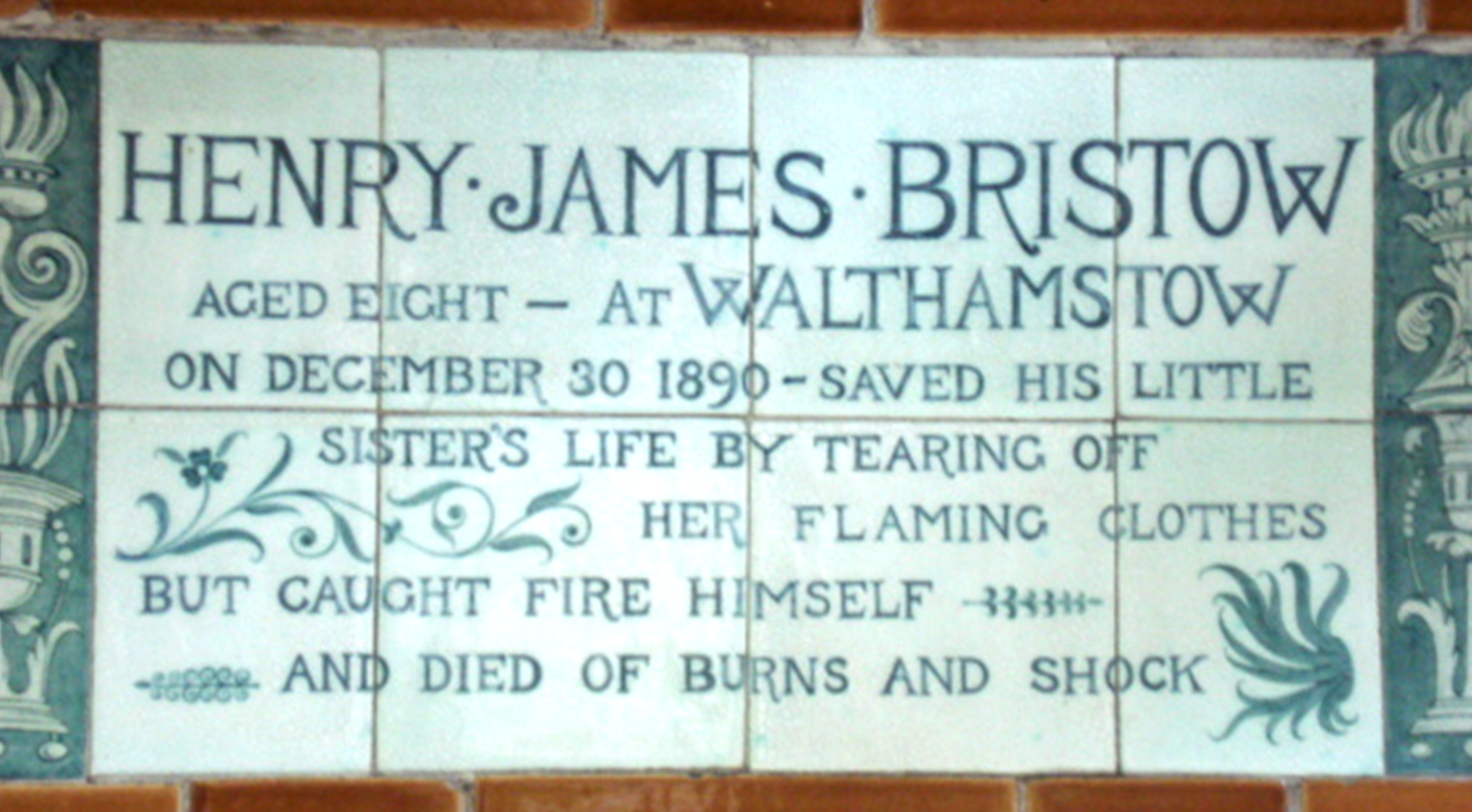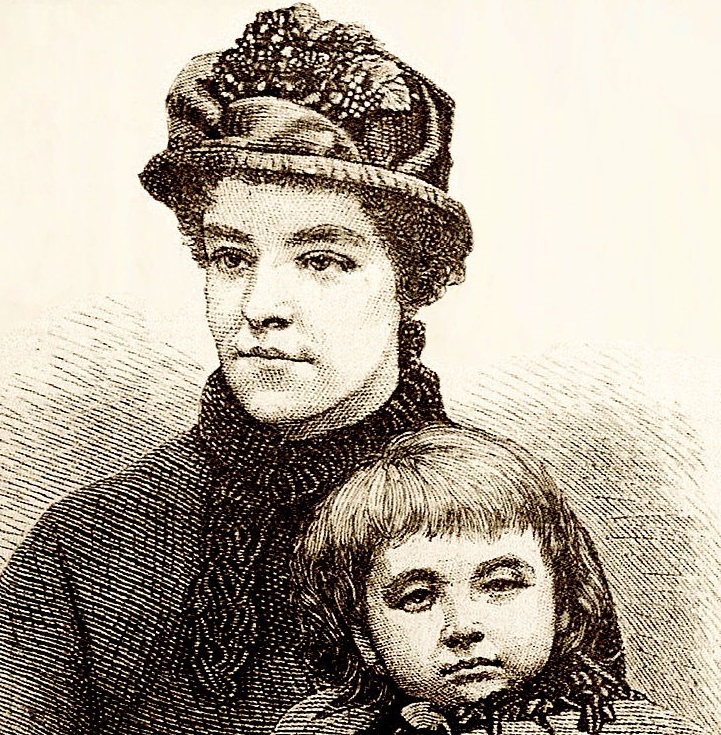A little north of St Paul’s Cathedral in London, you’ll find the small Postman’s Park. Nestled beneath an unassuming wooden shelter, there is a wall with a series of 54 tiles. Each one carries at least one name, every name the name of a hero who laid down life to save another. Surprisingly, many are the names of children.
This is the Memorial to Heroic Self Sacrifice, a memorial established by George and Mary Watts. On this Good Friday, here are three of their stories:
 Mary Rogers – The Stella was a steamship served the Channel Islands. On a foggy March 30th 1899, Mary Rogers, stewardess on board, made the ultimate sacrifice. In the 8 minutes between the ships collision with a granite rock and its sinking, Mary offered her lifejacket and her place in a life boat to others. She was one of the 105 who perished that night: she perished in serving others.[1]
Mary Rogers – The Stella was a steamship served the Channel Islands. On a foggy March 30th 1899, Mary Rogers, stewardess on board, made the ultimate sacrifice. In the 8 minutes between the ships collision with a granite rock and its sinking, Mary offered her lifejacket and her place in a life boat to others. She was one of the 105 who perished that night: she perished in serving others.[1]
 Alice Ayes – Alice arrived at the upstairs window of the house where she was nursemaid. The crowds below screamed at her to jump and save herself from the fire engulfing the building, fuelled by the stocks of oil and paint in the hardware shop below. In the intense heat, Alice disappeared from sight. When she reappeared it was to drop a mattress out before dropping Edith, whom she was looking after, to safety. Alice disappeared again only to reappear with Ellen, whom she also threw to beyond the reaches of the flame. Not content with rescuing Alice and Ellen, she headed back, once more, to the furnace. Moments later, Elizabeth was gently dropped to the crowds below. The crowd roared, calling on Alice to jump. But she was overcome by fire and fumes. She perished during her fall. Young Elizabeth later died from her injuries, but Alice’s self-sacrifice rescued the other two girls from certain death. [2]
Alice Ayes – Alice arrived at the upstairs window of the house where she was nursemaid. The crowds below screamed at her to jump and save herself from the fire engulfing the building, fuelled by the stocks of oil and paint in the hardware shop below. In the intense heat, Alice disappeared from sight. When she reappeared it was to drop a mattress out before dropping Edith, whom she was looking after, to safety. Alice disappeared again only to reappear with Ellen, whom she also threw to beyond the reaches of the flame. Not content with rescuing Alice and Ellen, she headed back, once more, to the furnace. Moments later, Elizabeth was gently dropped to the crowds below. The crowd roared, calling on Alice to jump. But she was overcome by fire and fumes. She perished during her fall. Young Elizabeth later died from her injuries, but Alice’s self-sacrifice rescued the other two girls from certain death. [2]
 Henry James Bristow – I salute this 8 year hero. Left alone with his 3 year old sister, he noticed that the paraffin lamp had set fire to her clothes. Bravely, he tackled the fire, trying with all his might and speed to pull the burning clothes from her. He saved her life, but was fatally burned himself. [3]
Henry James Bristow – I salute this 8 year hero. Left alone with his 3 year old sister, he noticed that the paraffin lamp had set fire to her clothes. Bravely, he tackled the fire, trying with all his might and speed to pull the burning clothes from her. He saved her life, but was fatally burned himself. [3]
The tiles are small. The meaning of sacrifice is too big for any tile.
Jesus famously declared in John 15:13 that, “No one has greater love than this, to lay down one’s life for one’s friends.”
The context of Jesus’ words is important, uttered in full awareness of imminent death. He could have easily escaped, yet chose not to. Humanity rejected God, yet He chose to die so that every single man, woman and child, without exception, could choose life.
Credit for images of tiles – Jez Nicholson, 2009, Creative Commons Attribution-Share Alike 2.0 license.
[1] http://www.jakesimpkin.org/ArticlesResearch/tabid/84/articleType/ArticleView/articleId/4/SS-Stella-Disaster.aspx
[2] J. Price, Postman’s Park: G. F. Watts’s Memorial to Heroic Self-sacrifice (Compton, Surrey: 2008, Watts Gallery), p. 57.
